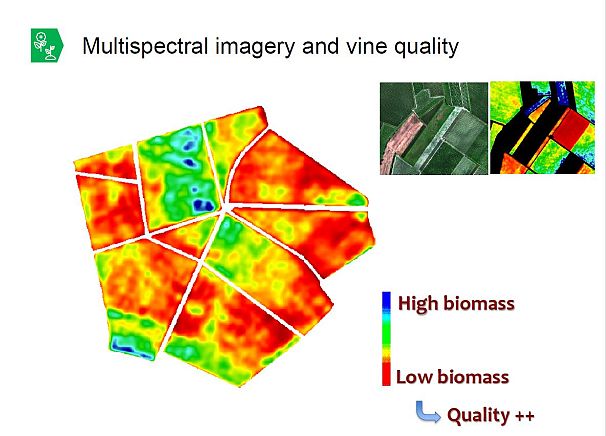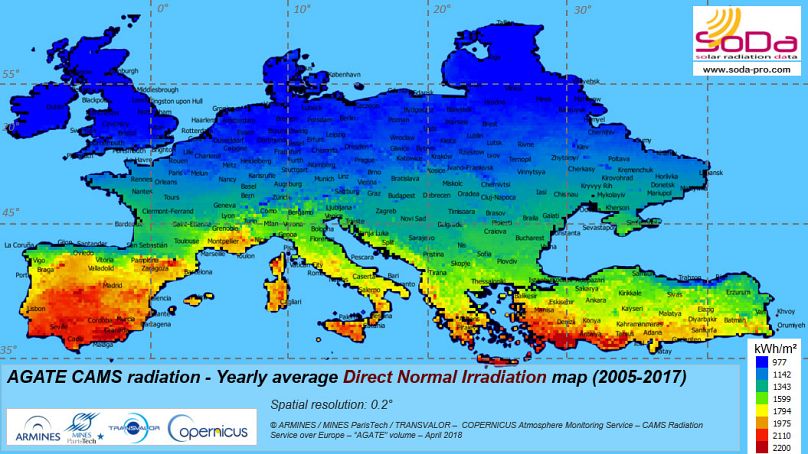From today’s wine growers in France to tomorrow’s investors in the tourism industry, Europe’s eyes in space are helping businesses navigate the challenges of climate change.
From today’s wine growers in France to tomorrow’s investors in the tourism industry, Europe’s eyes in space are helping businesses navigate the challenges of climate change.
The European Union economy is poised for a U-turn towards the Green sector with the ambitious emission reduction plans of the new Commission, and those behind Copernicus — the EU’s earth monitoring system — want its free tools and data to help more firms across the continent.
Copernicus’ satellite data and monitoring systems already provide vital information for scientists, government organisations and weather agencies.
"For the public, it is a bit overwhelming to see all the different possible applications of Earth observation as we implement them in Copernicus, however, our aim is to be a multiplier," Vincent-Henri Peuch, head of the Copernicus' Atmosphere Monitoring Service at the European Centre for Medium-Range Weather Forecasts (ECMWF).
"All our data is fully free and open, meaning that anyone can use it to develop applications for users," he added.
Freja Vamborg, senior scientist at the Climate Change Service also thinks that the target is not the everyday user like you and me. "The main user that we are targeting is someone that is in the intermediary, let's say a consultancy company rather than the very very end-user like a farmer or a tourism operator".
Stijn Vermoote, in charge of the Copernicus project inside ECMWF says that Copernicus has the will of letting other players benefit from their data: "We are an enabler," he states, but also promises that they keep working in offering products and applications more adapted to the needs of the different sectors. "Until now we have been working on the building blocks, we keep working on the next phases".
Read more: What on Earth (monitoring) can Copernicus do for me?
Where to start with Copernicus
"As simple users, there's a number of web-based platforms which are becoming available for using Copernicus data like the DIAS, where users can use the data without having to download huge data volumes to their computers, and in the Climate Change Service we have the Climate Data Store and the Climate Toolbox,” said Mark Parrington, senior scientist for the Atmosphere Monitoring Service. “There will be something similar for the atmospheric composition products."
So unless your company has the knowledge to extract and make sense of the data, the first step is to identify the apps, services, and companies already providing the applications adapted to your sector.
A good place to start is the Copernicus services websites (Atmosphere, Marine, Land, Climate Change, Security and Emergency).
The Climate Data Store (and soon the Atmosphere Data Store) has a "small but dedicated support team", according to ECMWF’s Stijn Vermoote, who are willing to help to direct companies and institutions to the right place.
How Copernicus is helping business
Land: Wine producers in world-famous Bordeaux region of France are using satellite-based data to make their decisions on the harvest, measuring things like how mature the grapes are from space or the health, mass, and homogeneity of the vineyards.
Satellite information can help make decisions on the use of fertilisers and pesticides. It can also measure if a field is adapted to a particular crop.
Nevertheless, local knowledge is still important.
“Copernicus works on a global and a pan-European scale and usually one also needs national, regional or local information," said Freja Vamborg.
Solar: Measuring and monitoring solar radiation has many possible applications in agriculture, but it's also a key factor to make decisions in the field of solar energy. Large companies like France's Neoen use the data provided by the Copernicus Atmosphere Monitoring Service to decide on where to install new solar plants or wind farms.
French startup In Sun We Trust, meanwhile, gives users the possibility of calculating the amount of solar energy their rooftop can produce.
Marine: The Copernicus Marine Service is also providing a wide range of data about the health of the oceans, weather and climate. It has had a big impact on generating revenues for intermediate users, according to a report by PricewaterhouseCoopers for the European Commission.
Tourism: "Tourism is also a sector where Copernicus information is becoming very useful, both for people, to plan and decide where they want to go, but also for investors, to decide where new facilities should be open in the context of a changing climate," said Peuch.
Many tourism offices and consultancy companies already count on the Copernicus Climate Change service's data to make their investment and project management decisions.
The service will publish a series of specific tools for tourism in the coming months.
Atmosphere: Another successful example of using the Atmosphere Monitoring Service data are the applications providing forecasts of pollutants, including euronews on our Weather section.
Developing apps based on Copernicus data: Another key area for businesses is the development of new applications based on its data, here are a few examples, mainly dedicated to air quality, U.V radiation or sea conditions. Copernicus helps startups and corporations via its incubator and Masters programmes.
And the EU's Earth monitoring service also proposes training sessions all around Europe, webinars and online courses and resources.
"For us, it's very important to understand how we transform raw data into wisdom and knowledge. In the future, we will focus more on user engagement. We want to know how end users are making sense of the final product and creating added value for their activity" says Sitjn Vermoote.













